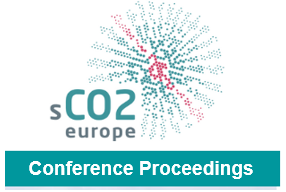Thermal efficiency gains enabled by using supercritical CO2 mixtures in Concentrated Solar Power applications
Supercritical Carbon Dioxide (sCO2) power cycles have been proposed for Concentrated Solar Power (CSP) applications as a means to increase the performance and reduce the cost of state-of-the-art CSP systems. Nevertheless, the sensitivity of sCO2 systems to the usually hot ambient temperatures found in solar sites compromises the actual thermodynamic and economic gains that were originally anticipated by researchers of this innovative power cycle.
In order to exploit the actual potential of sCO2 cycles, the utilization of dopants to shift the (pseudo)critical temperature of the working fluid to higher values is proposed here as a solution towards enabling exactly the same features of supercritical CO2 cycles even when ambient temperatures compromise the feasibility of the latter technology. To this end, this work explores the impact of adopting a CO2-based working mixture on the performance of a CSP power block, considering hexafluorobenzene (C6F6) and titanium tetrachloride (TiCl4) as possible dopants. Different cycle options and operating conditions are studied (250-300 bar and 550-700ºC) as well as molar fractions ranging between 10 and 25%.
The results in this work confirm that CO2 blends with 15-25%(v) of the cited dopants enable efficiencies that are well in excess of 50% for minimum cycle temperatures as high as 50 or even 55ºC. It is also confirmed that, for these cycles, turbine inlet temperature and pressure hardly have any effect on the characteristics of the cycle that yields the best performance possible. In this regard, the last part of this work also shows that cycle layout should be an additional degree of freedom in the optimisation process inasmuch as the best performing layout changes depending on boundary conditions.
Vorschau

Zitieren
Rechte
Nutzung und Vervielfältigung:
Dieses Werk kann unter einer Creative Commons Namensnennung 4.0 Lizenz (CC BY 4.0)
Creative Commons Namensnennung 4.0 Lizenz (CC BY 4.0)
genutzt werden.
